Thinking really really really big for Poplar Point's park
Isn't in the three scenarios put forward by DC planners, as discussed in this entry from Greater Greater Washington, "Poplar Point planners present possibilities." (Also see this previous GGW entry, "Poplar Point and the Case of the Too-Large Park.") GGW writes:
Should Poplar Point become two separate districts, one extending the Anacostia neighborhood and one connecting across the river? Or should it be one neighborhood, centered around the Metro station leaving parkland along the waterfront, or activating the waterfront with a large park to one side? Should DC redevelop the Anacostia Metro garage, or leave it? These are some of the questions DC economic development officials asked members of the community at last weekend's Poplar Point presentation.
I'd say for a connected place, rather than two separate districts on either side of a large green space, EXCEPT that I offer a different alternative. Two "separate" districts connected by an active public-civic-recreational-educational-amusement place. In this fashion, there is nothing separate about the land use plan, it's all connective and supportive of both east of the river interests and objectives while at the same connecting to west of the Anacostia River and anchoring the east with the kinds of civic assets that the community justifiably believes have been denied to it.
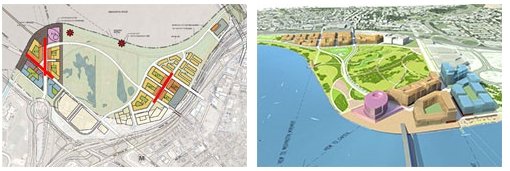
Alternative 1, Poplar Point redevelopment.
Yesterday I listed a bunch of articles about recent activities of the Project for Public Spaces. PPS is a planning firm kind of, but one with a advocacy bent. It's a nonprofit, built on the legacy of William H. Whyte and Jane Jacobs, but much of their operating budget comes from fee-for-services from doing planning consulting.
One of the articles, "The Place Doctor" from Convene Magazine is a kind of summary of the PPS philosophy. There is a section of the article that is particularly relevant to Washington, DC, where we have a great deal of open space/parks (especially those run by the National Park Service) but the parks are passive spaces, rather than active. From the article:
Activity is fundamental to great places. Kent dislikes the trend toward converting urban parks into open spaces that provide few things for people to do. The park of the future, Kent said, will be more like Europe’s 19th century pleasure gardens, such as Tivoli Gardens in Copenhagen. One good contemporary example is downtown Houston’s newly opened Discovery Green, where visitors can play bocce or horseshoes, picnic, take Pilates classes, play in a fountain, attend free concerts, shop at a farmer’s market, kayak, canoe, sail, and more.
Places like Millennium Park in Chicago, Campus Martius Park in Detroit, and Discovery Green in Houston are active fun places. Hell, have a ferris wheel like the London Eye.
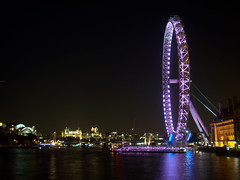
London Eye photo from Flickr by Adriano Aurelio Araujo.
Imagine that kind of park at Poplar Point, connecting the mixed use areas, connected by transit, maybe having a soccer stadium (I am of two minds on this, but see "D.C. United back in talks with District officials" from the Washington Business Journal), other civic assets--what about a real "City Museum" or a Science Center like the new Connecticut Science Center in Hartford (see "Future shock made child's play" from the Boston Globe) or a great maritime-related discovery center and activities and a Children's Theater and Library like Charlotte's ImaginOn--instead of another passive recreation space that is under-utilized in a city with an overabundance of passive park spaces.
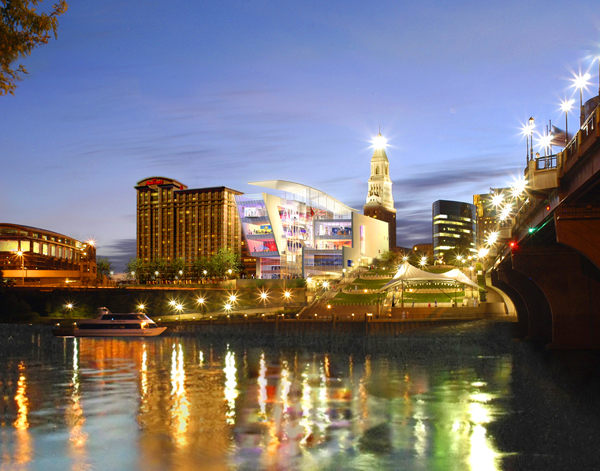
Rendering of the Connecticut Science Center, Hartford, located on the Connecticut River. (It just opened and I haven't been able to find good photos yet of the exterior.)
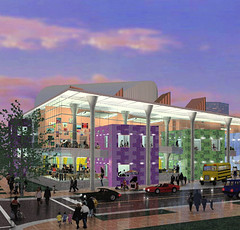
Imaginon -- Children's Library/Theater, Charlotte, NC.
Including a kick-a** recreation center. One of the problems with recreation planning in DC is that it is plain vanilla--every rec center is pretty much the same. The "big" centers have a pool. The smaller ones don't. How about a mini-aquatic park, urban sized (like the H Street Country Club putt putt course rather than Disney World, the Post reports in "Time to Join the H Street Country Club" about an indoor mini golf course), an indoor track, and other facilities that will help make this recreation be a destination, one that serves the entire city. (And maybe a velodrome, etc.)
But why should the cool amenities only be available in the suburbs? See "Aquatic Center Opens in Leesburg" from the Washington Post Loudoun Extra section about the recent opening of a new aquatic park there.
Etc.
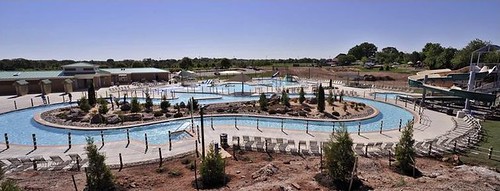
An overview of the new Aquatic Center at Leesburg's Ida Lee Park. Washington Post photo by Tracy Woodward.
Elsewhere in the article on PPS, PPS president Fred Kent is quoted saying "Every City needs a square."
Well, the area of the city called Anacostia-Ward 8-East of the River needs that square too. And maybe Poplar Point is the place to do it.
Who needs National Harbor anyway (see "National Harbor's 'Mini-City' Takes Shape" from the Post). Or the Children's Museum when we could do a Connecticut Science Center or a Imagion (Charlotte, NC) see "National Children's Museum's Launch Zone" from the Post.
Labels: cultural heritage/tourism, economic development, museums, parks, recreation, rivers and waterfronts, sustainable land use and resource planning, urban design/placemaking, urban revitalization



0 Comments:
Post a Comment
<< Home